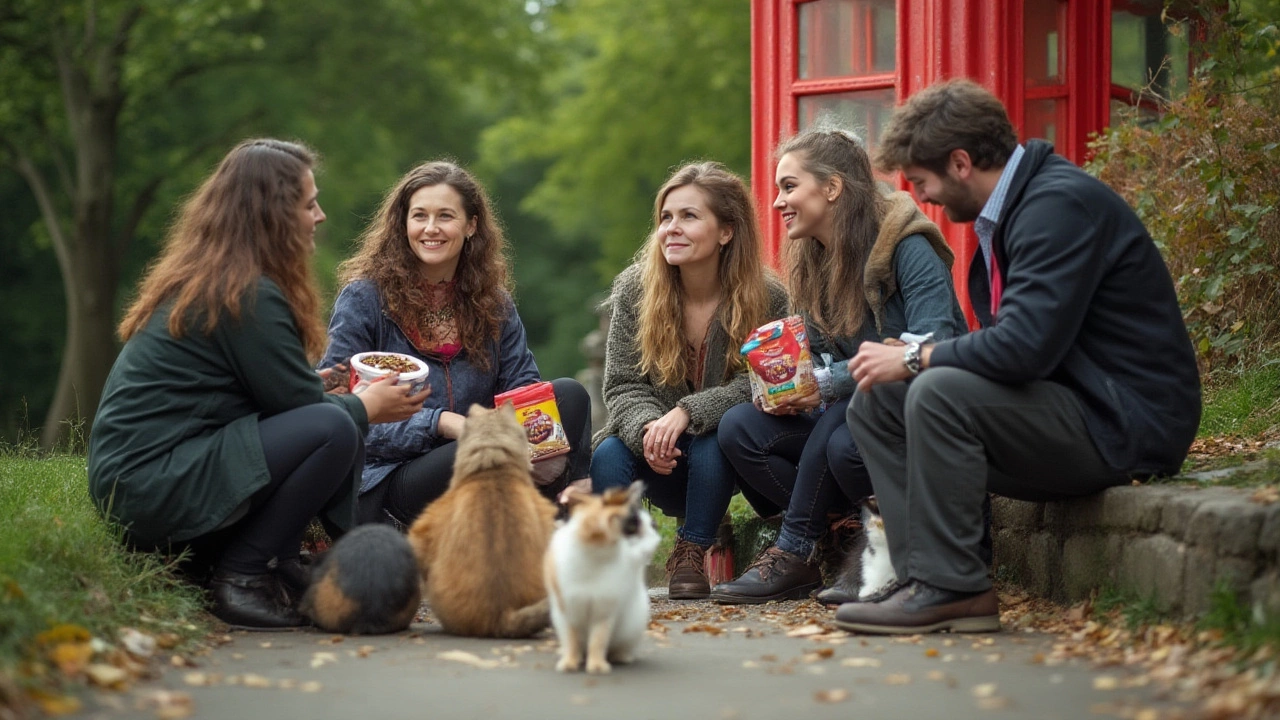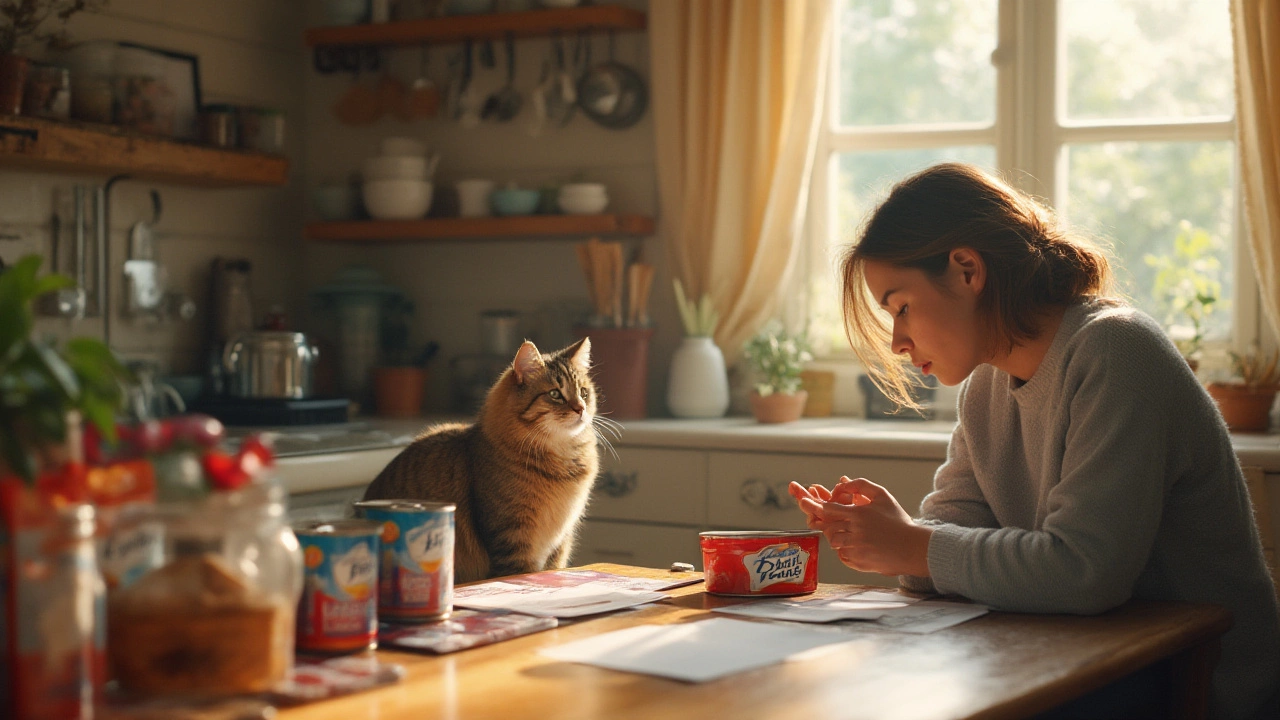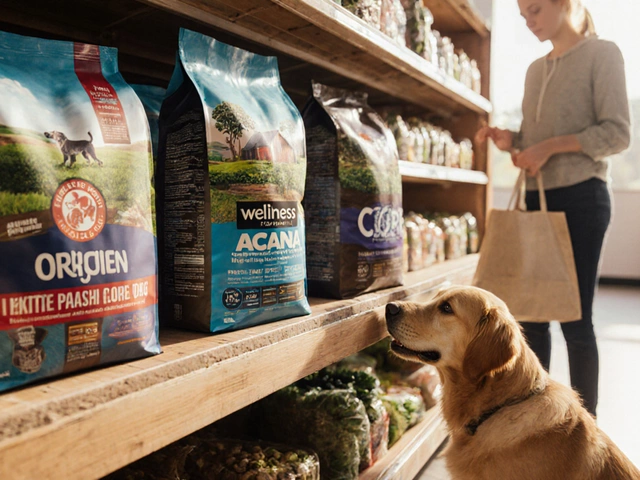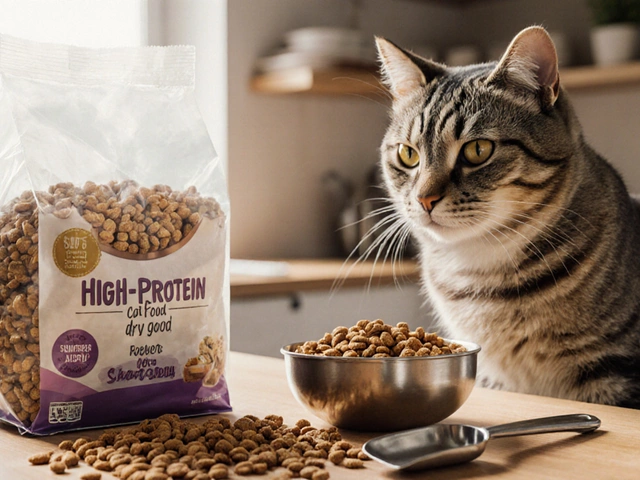When you think of pampered cats, you picture those elegant little felines daintily nibbling at a gourmet spread—maybe something like Fancy Feast. But here’s the twist. Instead of purrs and satisfied whiskers, this premium cat food brand has found itself in the middle of a spotlight that no one really wants: controversy. What’s the real story? Are pet parents overreacting, or is there substance behind the murmurings?
The Origins of Fancy Feast’s Reputation
Fancy Feast launched in 1982, showing up on grocery shelves with promises of luxury meals for cats that taste like something their humans might envy. The little cans with pretty labels looked different from anything on the market, so Fancy Feast quickly earned a reputation for being sophisticated and high-end. People bought it not just for the convenience (single servings—no leftovers getting crusty in the fridge!) but because it felt like giving their cats a treat. Over the years, the brand leaned hard into imagery of cats living their best, most elegant lives. You may remember TV commercials with white tablecloths and taste-test panels. By the mid-1990s, Fancy Feast had cemented itself as a household name.
Behind all the clever marketing, though, questions started to pop up. What goes into that cute tin? Is it truly as premium as the branding suggests? That’s where things get interesting. Pet parents, veterinarians, and even animal rights advocates began asking for more details—some driven by health scares, others fueled by changes in the recipes that cats just suddenly refused to eat. The company’s image hinged on transparency and trust, but Fancy Feast found itself playing defense as rumors swirled online.
At first, it was little things: comments on pet forums about altered flavors or cats developing sudden digestive issues. Product reviews took on a sharper tone, with people sharing stories of their pets experiencing consequences after switching back and forth between different wet food formulas. No single event started the controversy, which is what makes it so sticky. It built up over time, a slow burn of concern that forced Fancy Feast into the hot seat of the pet food industry.
Ingredient Concerns: What’s Really Inside the Can?
Open any can of Fancy Feast and you’ll get a mix of meat by-products, fish derivatives, and a list of stuff that looks like it belongs in a chemistry set (guar gum, anyone?). Here’s where things get complicated. The pet food world is only loosely regulated compared to human food. Sure, they have to meet certain AAFCO (Association of American Feed Control Officials) standards, but loopholes mean words like “meat by-products” cover a lot.
Take taurine, for example—a vital amino acid cats absolutely need. Without it, they can get seriously sick. Fancy Feast proudly lists taurine, but critics ask about ingredient sourcing and overall food quality. Ingredients like artificial flavors and colors make some cat parents nervous, sparking questions about long-term health effects. Then there's the mysterious 'meat by-products.' These might sound off-putting, but in reality, they often include organ meat (liver, kidney…) that’s nutritionally valuable for cats. Still, nobody loves the idea of eating vaguely defined leftovers, so mistrust grows every time a label looks too generic.
Another hot button is grain content. Many cats are fine eating some grains, but the internet is full of voices pushing grain-free diets, claiming grains contribute to allergies and digestion issues. Fancy Feast offers both classic formulas with rice and wheat and newer grain-free options. Changes in recipes have led to confusion—product lines get subtle makeovers, and cats who once gobbled up their chicken pâté suddenly turn up their noses when the recipe shifts. Social media posts track formula tweaks down to the tiniest color change, and pet owners—ever alert to their fur babies’ quirks—aren’t shy about voicing frustration.
The biggest uproar? Ingredient sourcing. People worry about where Fancy Feast gets meats and fish, especially after stories of questionable supply chains in the broader pet food world. Purina, Fancy Feast’s parent company, has periodically faced backlash over how transparently they reveal ingredient origin, particularly after a 2015 lawsuit involved labor practices in their seafood supply chain. This didn’t just make people cautious about the food’s ingredients; it raised moral questions about what gets scooped into those cans.

Safety Recalls and Health Issues: Separating Fact from Fear
If you ever read news about pet food recalls, you know how quickly anxiety spreads. A voluntary recall can mean the difference between trust and panic. Fancy Feast hasn’t been hit as frequently with recalls as some brands, but that doesn’t mean fans haven’t gotten jumpy. Rumors about tainted batches have surfaced—sometimes tied to country-of-origin worries (like ingredients processed in Thailand or China), other times to larger Purina recalls. These tend to spiral fast, especially when connected to news of pets getting sick. In past years, Purina has recalled some of its other lines due to salmonella and high vitamin D concerns, and, given the shared manufacturing sites, this is enough to make cat parents nervous.
So, has Fancy Feast itself been directly linked with major outbreaks or confirmed animal illness clusters? Not officially by the FDA. But scattered reports in consumer review databases and pet forums reference cats getting upset stomachs, refusing changed formulas, or developing new allergies. Sometimes these issues come down to picky eating or pre-existing conditions—but for cautious owners, it’s hard to shake the worry. The lack of concrete recall doesn’t always comfort people, especially when stories circulate on Reddit or in Facebook groups about mysterious illness outbreaks that seem to coincide with food batch numbers.
One fact: canned cat food in general is less prone to bacteria than dry, simply because it’s processed at high heat to ensure longevity. Still, pet lovers know cats are sensitive creatures. Even a minor change—say a subtle protein swap—can trigger a digestive rebellion. When something does go wrong, it’s not easy to pinpoint the exact culprit. Environmental stress, age, dental problems, or allergies often overlap with dietary changes, making solid answers tricky. To make things messier, cats are notorious for being finicky, so any dislike of a new batch can feed into bigger fears.
Debate Over Pet Food Ethics and Transparency
Beneath all the noise about what’s in the tin, a bigger debate bubbles away: how much do we, as pet consumers, really know about what goes into our animals’ food? Fancy Feast’s parent company, Purina (owned by Nestlé), is no stranger to public scrutiny. In 2015, Nestlé Purina made headlines thanks to an Associated Press investigation into Thai fishing supply chains that allegedly involved forced labor. Purina said they addressed these issues and increased monitoring—but to nervous pet owners, the story stung.
Transparency turns out to be the keyword. Some folks feel reassured when brands publish sourcing info, ingredient origins, and manufacturing locations. Fancy Feast has responded with more detailed website disclosures about ingredient country-of-origin and ethical sourcing. They even highlight partnerships with fisheries and farms meeting stricter standards as of 2022. But for others, anything less than full traceability feels hollow. The fact that Fancy Feast is mass-produced (with millions of cans a year) only feeds suspicion that quality can slip, especially when compared to small-batch or boutique brands.
There’s also the discussion about what “premium” really means. Just because the can looks luxurious, does it guarantee high nutritional value? Nutritionists point out that Fancy Feast’s classic lines offer a solid baseline of nutrients for adult cats, but ingredients aren't that different from mid-tier competitors. People paying extra want to believe they're getting true value—so when stories break about mass production or questionable supply chains, feelings of being duped lead to public backlash.
Let’s not forget the role of social media here. Cat owners flock to platforms like Reddit, Facebook, and TikTok to share both horror stories and glowing reviews, creating echo chambers where tales of allergic reactions or “secret” recalls can go viral in hours. This fast-paced rumor mill often outstrips what brands can officially address. So transparency, or the lack of it, only grows into a bigger deal.

What Can Cat Owners Do? Tips and Takeaways
Wading through all this controversy leaves a lot of people feeling lost. But you don’t have to chuck your whole Fancy Feast stash straight into the trash. Here’s what you can actually do to make savvy decisions for your whiskered friend:
- Check the can or box for the latest expiration date and country of origin—companies sometimes change manufacturing locations or suppliers, and these details can shift even within the same year.
- If your cat suddenly rejects a formula they've loved for years, jot down the batch code and lot number. Call Purina customer service for clarification, or report to FDA if you suspect a contamination.
- Want to dive deeper? Compare ingredient lists of old and new cans. Pet forums often crowdsource side-by-side reviews when formulas switch. Keep some old packaging if you’re worried about changes.
- Monitor for signs of food intolerance—repeated vomiting, changes in bowel movements, or new skin irritations. These could signal an allergy, but also sometimes a viral infection or stress. If in doubt, talk to your vet and bring the food can with you to the appointment.
- If ethical sourcing matters, push brands for answers. Fancy Feast’s site now lists more about their supply chain, but if that’s not enough, look into smaller brands that publish robust third-party audit reports.
- Rotate flavors and protein sources. Cats can be fussy, but switching it up occasionally helps them avoid forming attachment to a single recipe, reducing refusal if a particular flavor vanishes or changes.
- Above all, research beyond the label. Many top vet nutritionists recommend variety—don’t put all your treats in one bowl. Try mixing Fancy Feast with a second brand, or supplementing with home-cooked meals under a vet’s advice.
So, is Fancy Feast dangerous or simply misunderstood? The answer isn’t black and white. The debate shows how passionate people are about what goes into their cat’s bowl. Pet food choices are so personal, and what works wonders for one tabby might upset the next. As the industry gets more transparent and consumers ask more questions, brands like Fancy Feast will have to keep raising their game, especially when cat food safety is front and center in caring for your favorite furball.





